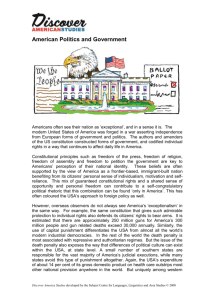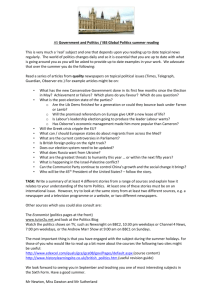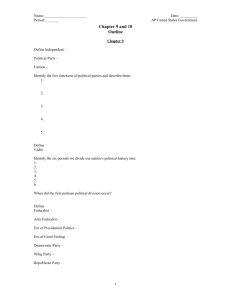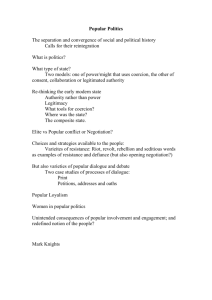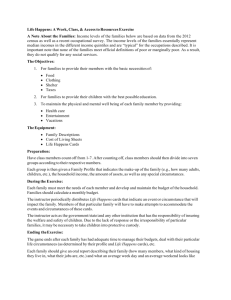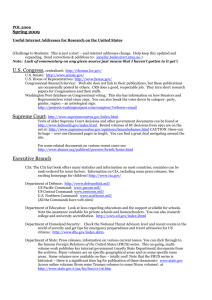Political Science 353 Donovan Midterm Exam Review Questions
advertisement
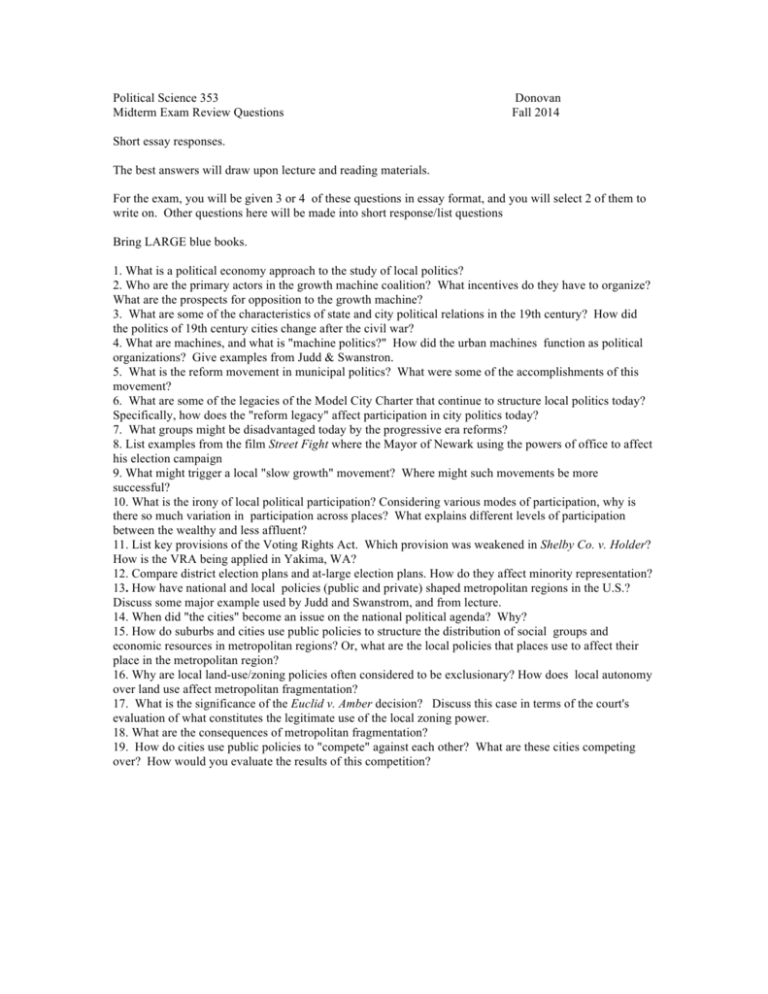
Political Science 353 Midterm Exam Review Questions Donovan Fall 2014 Short essay responses. The best answers will draw upon lecture and reading materials. For the exam, you will be given 3 or 4 of these questions in essay format, and you will select 2 of them to write on. Other questions here will be made into short response/list questions Bring LARGE blue books. 1. What is a political economy approach to the study of local politics? 2. Who are the primary actors in the growth machine coalition? What incentives do they have to organize? What are the prospects for opposition to the growth machine? 3. What are some of the characteristics of state and city political relations in the 19th century? How did the politics of 19th century cities change after the civil war? 4. What are machines, and what is "machine politics?" How did the urban machines function as political organizations? Give examples from Judd & Swanstron. 5. What is the reform movement in municipal politics? What were some of the accomplishments of this movement? 6. What are some of the legacies of the Model City Charter that continue to structure local politics today? Specifically, how does the "reform legacy" affect participation in city politics today? 7. What groups might be disadvantaged today by the progressive era reforms? 8. List examples from the film Street Fight where the Mayor of Newark using the powers of office to affect his election campaign 9. What might trigger a local "slow growth" movement? Where might such movements be more successful? 10. What is the irony of local political participation? Considering various modes of participation, why is there so much variation in participation across places? What explains different levels of participation between the wealthy and less affluent? 11. List key provisions of the Voting Rights Act. Which provision was weakened in Shelby Co. v. Holder? How is the VRA being applied in Yakima, WA? 12. Compare district election plans and at-large election plans. How do they affect minority representation? 13. How have national and local policies (public and private) shaped metropolitan regions in the U.S.? Discuss some major example used by Judd and Swanstrom, and from lecture. 14. When did "the cities" become an issue on the national political agenda? Why? 15. How do suburbs and cities use public policies to structure the distribution of social groups and economic resources in metropolitan regions? Or, what are the local policies that places use to affect their place in the metropolitan region? 16. Why are local land-use/zoning policies often considered to be exclusionary? How does local autonomy over land use affect metropolitan fragmentation? 17. What is the significance of the Euclid v. Amber decision? Discuss this case in terms of the court's evaluation of what constitutes the legitimate use of the local zoning power. 18. What are the consequences of metropolitan fragmentation? 19. How do cities use public policies to "compete" against each other? What are these cities competing over? How would you evaluate the results of this competition?
